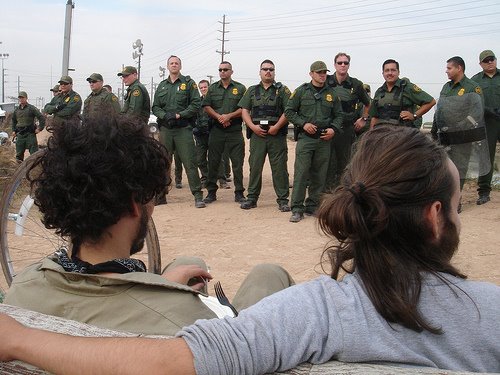Boston Review Nov/Dec 2009
County Clerk Dianne Florez noticed it first. Plumes of smoke were rising outside
the small West Texas town of Pecos. “The prison is burning again,” she
announced.
About a month and a half before, on December 12, 2008, inmates had
rioted to protest the death of one of their own, Jesus Manuel Galindo, 32. When
Galindo’s body was removed from the prison in what looked to them like a large
black trash bag, they set fire to the recreational center and occupied the
exercise yard overnight. Using smuggled cell phones, they told worried family
members and the media about poor medical care in the prison and described the
treatment of Galindo, who had been in solitary confinement since mid-November.
During that time, fellow inmates and his mother, who called the prison nearly
every day, had warned authorities that Galindo needed daily medication for
epilepsy and was suffering from severe seizures in the “security housing unit,”
which the inmates call the “hole.”
I arrived in Pecos on February 2, shortly
after the second riot broke out. I had driven 200 miles east from El Paso
through the northern reaches of the Chihuahuan desert.
Pecos is the seat of
Reeves County in “far west” Texas and home to what the prison giant GEO Group
calls “the largest detention/correctional facility under private management in
the world.” The prison, a sprawling complex surrounded by forbidding perimeter
fences on the town’s deserted southwest edge, holds up to 3,700 prisoners.
Almost all are serving time in federal lockup before being deported and are what
the Departments of Justice and Homeland Security (DHS) call “criminal
aliens.”
Although the term “criminal aliens” has no precise definition, its
broadening use reflects a trend in dealing with immigrants. With the post-9/11
creation of DHS and its two agencies—Immigration and Customs Enforcement (ICE)
and Customs and Border Protection (CBP)—a wide sector of aliens increasingly
became the focus of joint efforts by immigration and law enforcement officers.
ICE’s Criminal Alien Program, working with local police, began targeting for
deportation both legal and illegal immigrants with criminal records. And CBP’s
Border Patrol began to turn over illegal border crossers to the justice system
for criminal prosecution, instead of, as in the past, simply deporting them.
Many criminal aliens are long-term legal residents of the United States and are
also the parents, children, or siblings of U.S. citizens and lawful residents.
Read more: http://bostonreview.net/BR34.6/barry.php

No comments:
Post a Comment